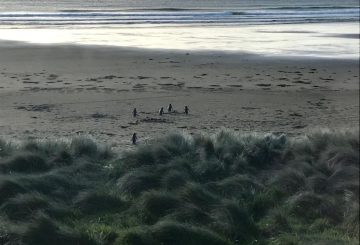Việc nâng cấp gần đây của Đường Cameron, trải dài từ Phố Harington đến Đại lộ 17, đã được cộng đồng địa phương đón nhận nồng nhiệt. Việc nâng cấp bao gồm việc bổ sung hai làn đường giao thông ở mỗi hướng, nhiều ngã tư dành cho người đi bộ hơn và một đường xe đạp hai chiều mới.
Kelvin Hill, người quản lý kết quả cơ sở hạ tầng giao thông của Hội đồng, đã báo cáo phản hồi tích cực từ cộng đồng, đặc biệt là liên quan đến đường xe đạp mới. Ông khuyến khích mọi người đến và xem những cải tiến cho chính họ.
Việc nâng cấp cũng cho phép thay thế các đường ống nước có tuổi đời hàng thế kỷ dưới đường. Điều này sẽ mang lại lợi ích cho dân số ngày càng tăng trên bán đảo Te Papa.
Cặp vợ chồng đã nghỉ hưu Andrew và Pam Thorpe, những người đam mê đi xe đạp, đặc biệt hài lòng với đường đi xe đạp mới. Họ sử dụng nó để đạp xe giải trí và đi lại đến trung tâm thành phố. Andrew nói đùa rằng họ thậm chí sẽ sử dụng nó để mua sắm tạp hóa nếu họ có thể tìm ra cách mang hàng tạp hóa về nhà.
Cặp đôi cũng đánh giá cao việc trồng mới và cảm giác rộng rãi của Đường Cameron được nâng cấp. Họ đã phát hiện ra rằng các tài xế thường quan tâm đến người đi xe đạp tại các giao lộ, thường nhường chỗ để cho họ đi qua.
Tuy nhiên, có một số thách thức với các con đường chung nơi người đi xe đạp, người đi bộ và người sử dụng xe buýt chia sẻ cùng một không gian. Andrew lưu ý rằng một số người đi bộ không quen chia sẻ không gian với người đi xe đạp, nhưng tin rằng mọi người cuối cùng sẽ quen với nó.
Để biết mẹo sử dụng đường xe đạp mới, hãy truy cập www.tauranga.govt.nz/cameronroad.




























































